Sony X90J review: one of 2021's best mid-range 4K TVs
Sony X90J is a terrific mid-range 4K TV that delivers an excellent viewing experience, though with some small downsides

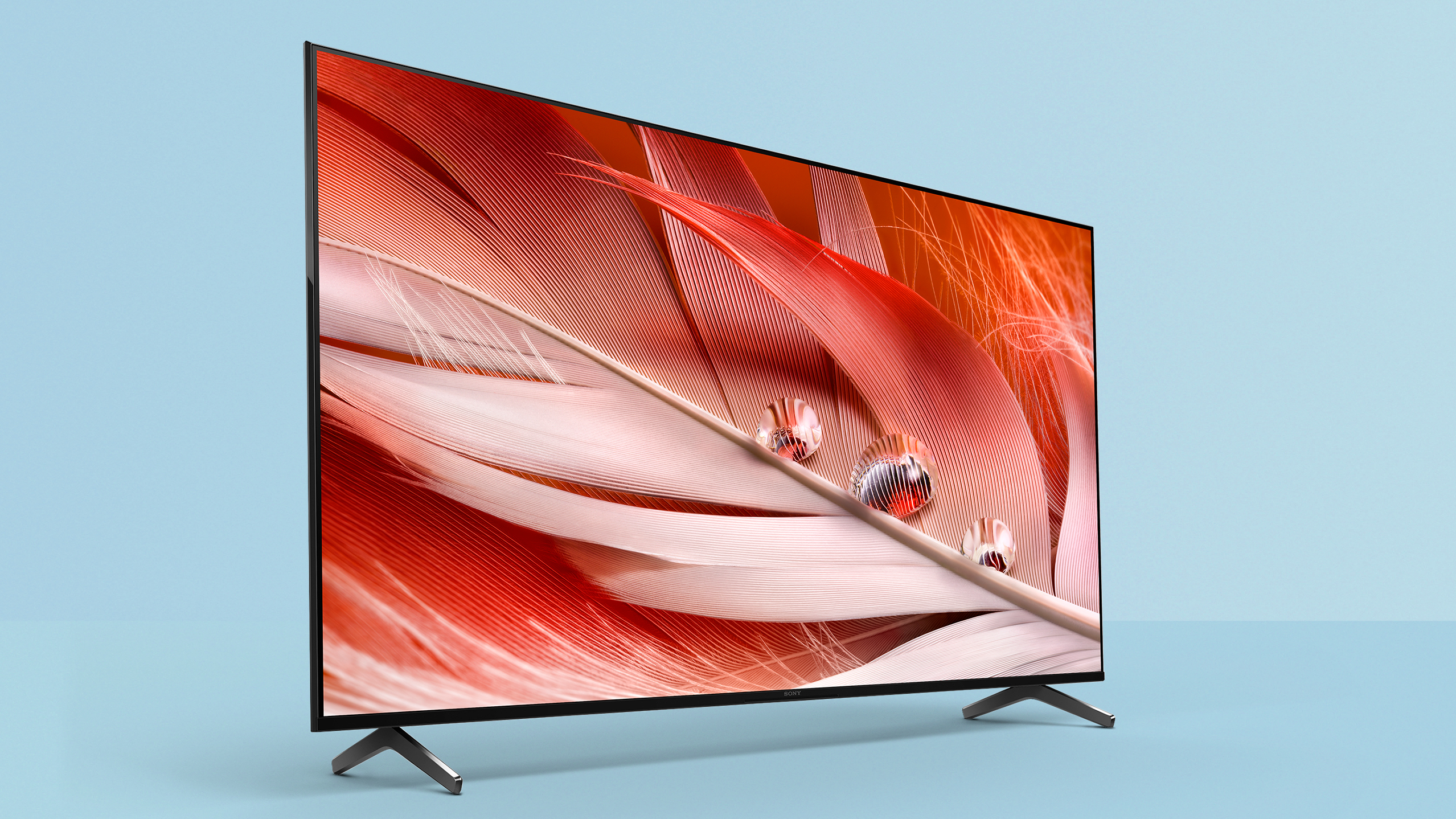
Sony's X90J delivers on the promise of its predecessor by addressing many of its issues, with the inclusion of HDMI 2.1 support and a brand new processor making it a good option for next-gen gamers and videophiles.
-
+
Excellent color reproduction
-
+
Great upscaling
-
+
Ready for next-gen consoles
-
+
Fresh Google TV interface
-
-
Only two HDMI 2.1 ports
-
-
Sound quality just OK
-
-
Noticeable glare
Why you can trust T3
This Sony X90J review is happening just as a huge number of TVs arrive on the scene, including Sony's own stunning OLED sets (A90J and A80J), so this mid-range 4K LED TV is in danger of being lost in the churn, and that would be a huge shame.
That's because the Sony X90J is an excellent TV bringing a middle-of-the pack price with some high-end features. And, happily, it's more flexible for sizing than last year's equivalent model, which frustrated us by only offering big sizes – and there are some great Black Friday deals on this TV at all sizes, making it even more tempting.
Sony kicks off its size options with a 50-inch version, and goes all the way up to a hefty 75-inch model. However, for the purposes of this review, we're looking at the 65-inch variant.
As a replacement for the Sony XH90/X900H, the X90J improves upon its predecessor in a variety of ways, with the star of the show being the brand new processor. Crucially it also keeps the two HDMI 2.1 ports of the previous model, making it a good option for PS5 and Xbox Series X gamers and one of the best gaming TVs, with 4K 120Hz and VRR support on board.
Beyond that, the Sony X90J delivers a solid viewing foundation, with stunningly vibrant colors, decent blacks, excellent upscaling and a bevy of processing smarts. It's one of the best TVs you can buy right now for its price, and this 65-inch version is absolutely one of the best 65-inch TVs.
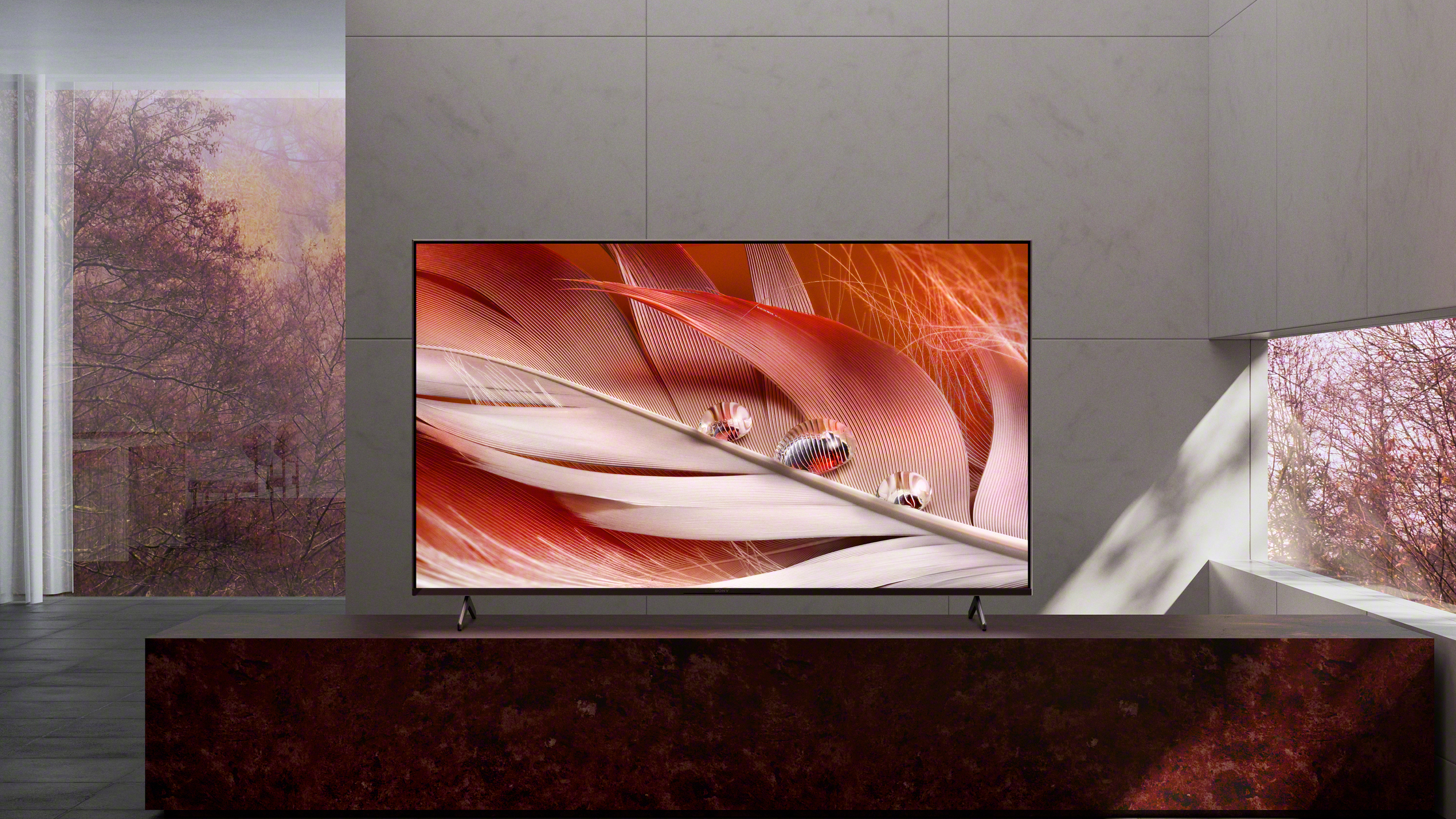
Sony X90J review: Price & release date
The Sony X90J was released in May 2021. As mentioned earlier, the model we’ve tested is the 65-inch Sony X90J (XR65X90J), which is available to buy now at the very reasonable price of $1,599 / £1,799 / AU$2,695.
Of course, the range starts cheaper than that for smaller models, with a 50-inch version (XR50X90J) priced at $1,099 / £1,249 / AU$1,895, and a 55-inch model (XR55X90J) which'll cost you $1,299 / £1,399 / AU$2,185. Additionally, a larger 75-inch option (XR75X90J) is also available, priced at $2,399 / £2,599 / AU$4,299.
Get all the latest news, reviews, deals and buying guides on gorgeous tech, home and active products from the T3 experts
You can find the current lowest prices for all models here.
Sony X90J review: Features & what's new
Being a Sony television, you'll find that the X90J supports all the major HDR standards (Dolby Vision, HDR10, HLG) with the exception of the Samsung-led HDR10+ format. HDR10+ is the one of the those we're most happy to live without (it's only major supporter is Amazon Prime Video, and you still get normal HDR10 even without it), but there are TVs that support all four, so it's a shame the this doesn't.
There are four HDMI ports in total – two of which support the new HDMI 2.1 specification, which is great for future-proofing. One of those ports also offers eARC for lossless transfer of high-end audio codecs.
Granted, we would have liked for every HDMI port on the X90J to offer support for the next-gen 2.1 spec, but at least it's more than some other TVs in 2021 are offering. Many cheaper sets won't include the new connection type at all.
The inclusion of HDMI 2.1 support on the X90J means gamers can take advantage of next-gen features such as 4K at 120fps. Sony has also added VRR support in an update (so you might need to update your model after buying to activate it).
The X90J is also one of Sony's 'Perfect for PlayStation' TVs, which means that when a PS5 is connected, the console auto-adjusts its HDR output to map perfectly to the TV's capabilities, meaning that you should get the best detail in highlights and lowlights from this TV compared to similar models (though obviously other TVs may have image advantages in other areas).
For many, the X90J's biggest selling point will be Sony's new Cognitive Processor XR, which has been implemented across all of its 2021 televisions. According to Sony, It brings "cognitive intelligence" to its TVs for the first time, allowing it to process images a way that matches how our brains perceive things.
The other big difference between the X90J and last year's model is that it's ditched the dated Android TV interface in favor of the all-new Google TV platform, which populates your home screen with content pulled from all of your installed streaming and catch up services.
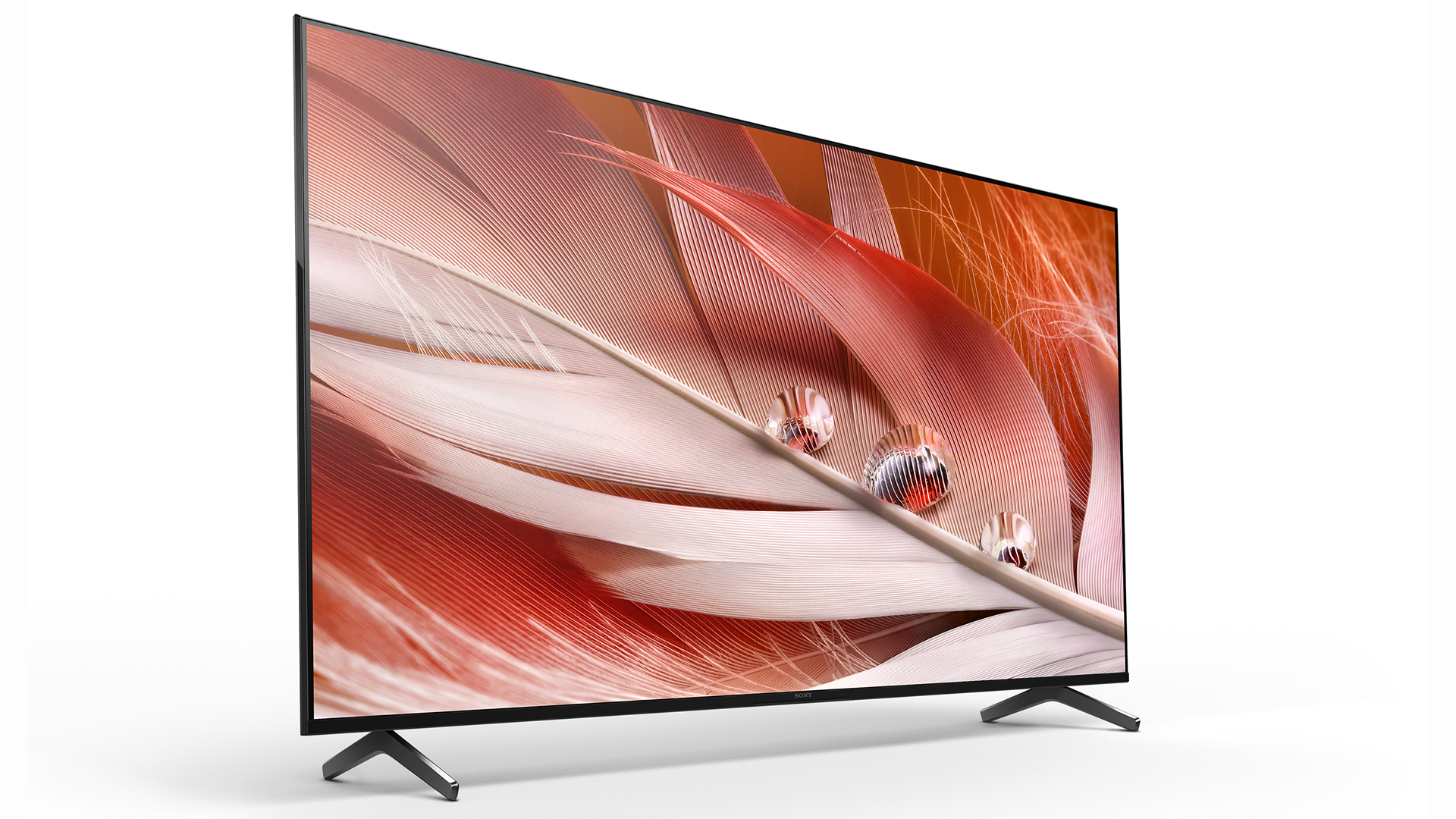
Sony X90J review: Picture quality
Like the XH90/X900H before it, Sony's X90J sports a VA-type LCD panel with a direct Full Array backlight, which means it offers brilliant colors and exceptional brightness at a slight expense to viewing angles. It still looks pretty good from the side, however, you'll want to sit directly in front of the X90J for the best possible viewing experience.
Sony's TVs are well known for offering gorgeously vibrant colours, and the X90J is no exception. Much of this is thanks to its Cognitive Processor XR and the XR Triluminos Pro engine, which is used to sweeten the TV's saturation and hue in a way that's especially pleasing to the human eye.
XR Triluminos Pro works in conjunction with several other XR-specific features. XR Contrast Booster 5 is used to balance light and shadow dynamically, with extra attention paid to showing fine detail in both light and dark areas, while 4K XR Smoothing works to reduce banding, allowing for a seamless transition between color gradations.
In practise, we found that the X90J was able to handle all of these things deftly and without a single hiccup or hint of image processing issues. 4K images remained sharp and consistent without any noticeable aliasing.
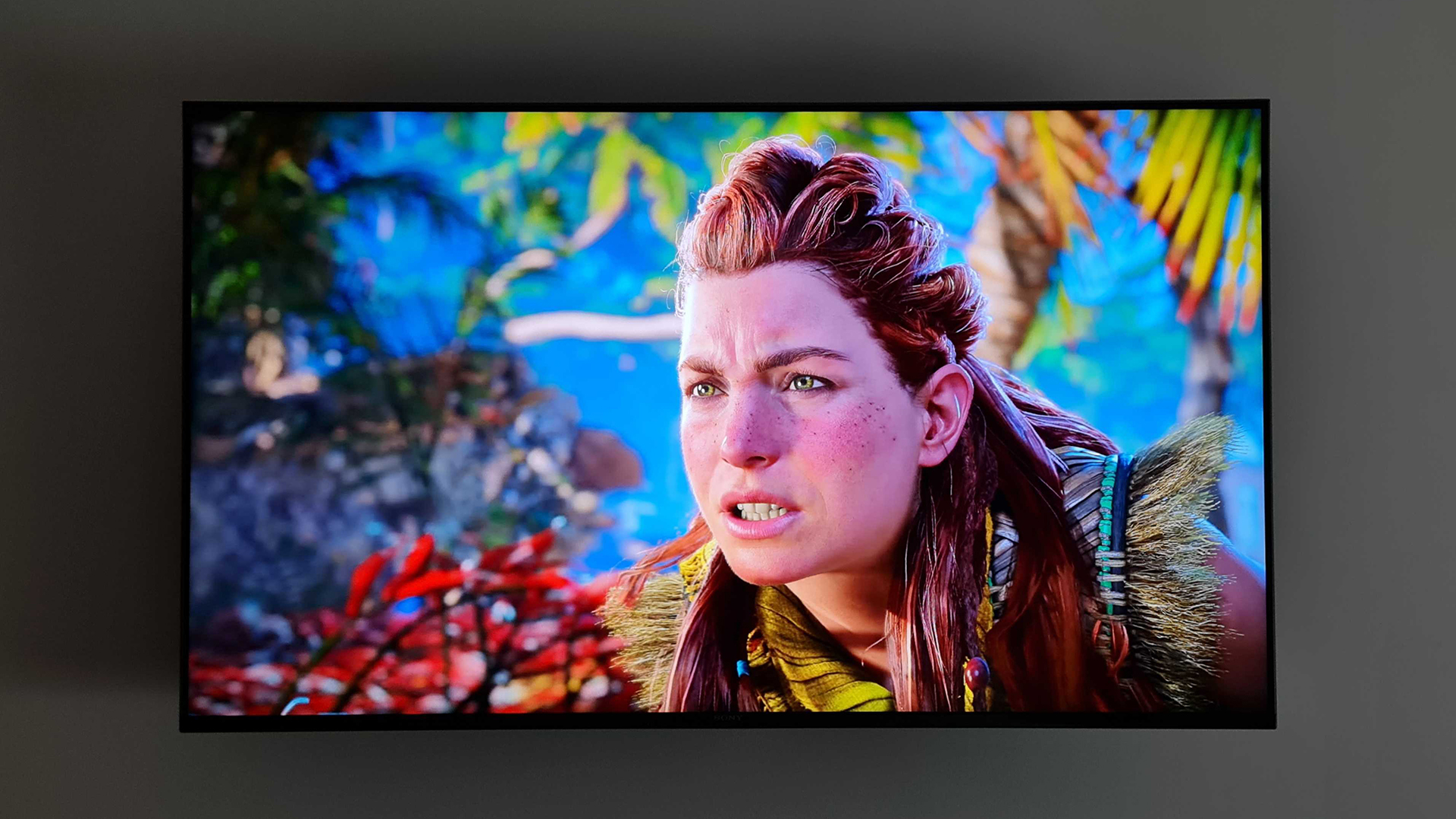
Dark areas tend to be the weak point of mid-range TVs compared to high-end ones, but the Sony A90J impresses here, thanks to the local dimming of its backlight. Even in complex night scenes with lots of motion and action, it handles itself well, keeping detail and clarity at the forefront.
Admittedly, contrast wasn't quite up to what the best OLED TVs can do – or the what the spectacular new Mini-LED-powered Samsung QN95A is capable of – but we were pleased by what the X90J's dimming zones were able to achieve nonetheless, especially since OLED and Mini-LED TVs are much more expensive.
The X90J exhibited minimal blooming around bright objects and was able to deliver solid blacks for the most part. For most content, it will be more than sufficient.
In bright and beautiful daylight scenes, you can see an astonishing amount of detail in 4K sources. Color is exceptionally vibrant and lifelike, with plenty of nuance of tones. Edge detail is also sharp and smooth, and skin-tones are realistic and natural.
Another key feature of Sony's Cognitive Processor XR is in the way it's able to redirect its processing smarts to the most important areas of your chosen content. As Sony describes it, the XR processor will find the focal point of what you're watching and make sure it looks as good as possible.
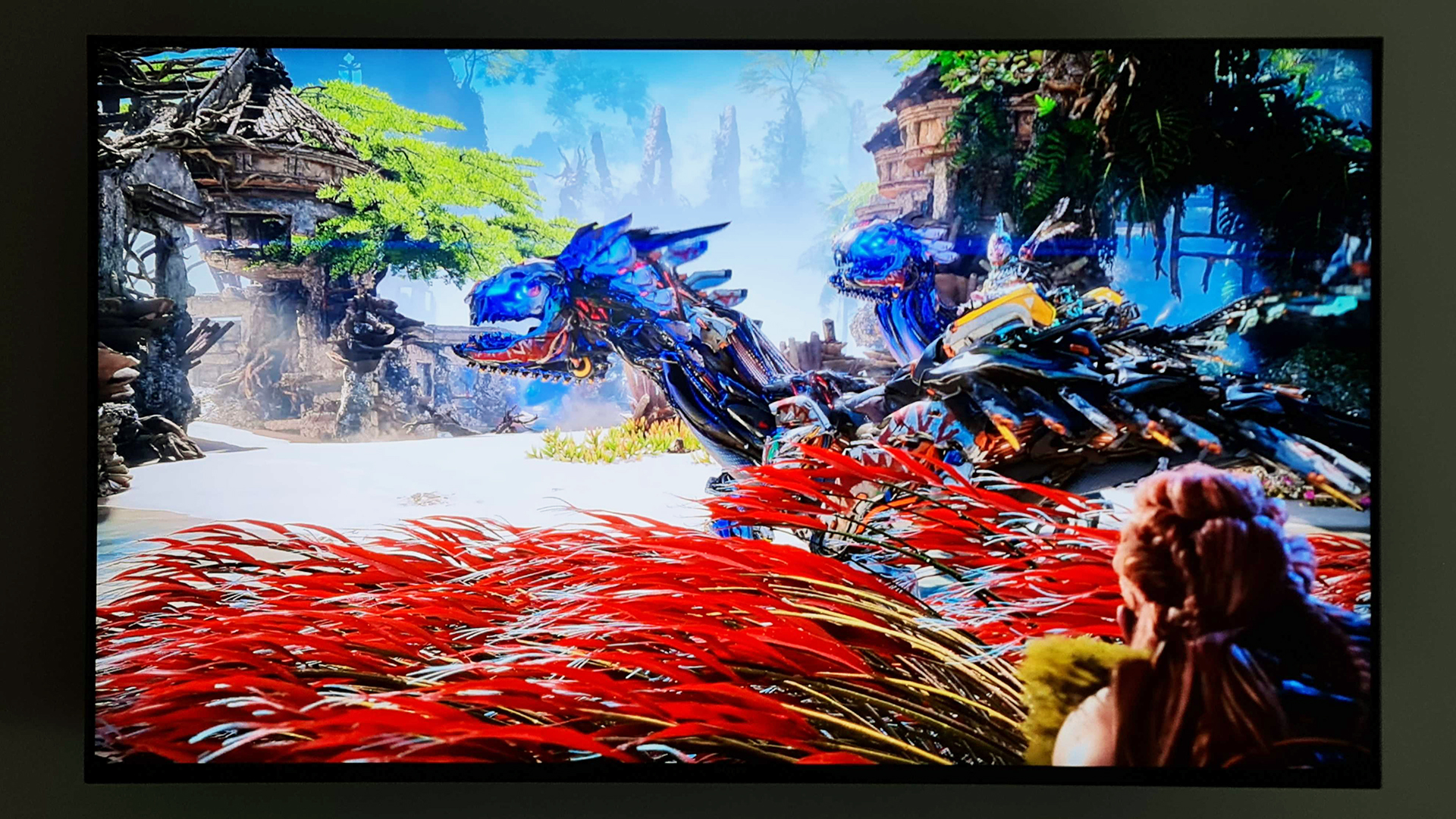
We noticed this feature in action most clearly in scenes with shallow depth of field, where the rest of the world is blurred around the in-focus subject. It's in these moments where the Cognitive Processor XR made whatever's in focus look especially detailed and vivid (though this is obviously the easiest test of its capabilities).
Like the X1 4K HDR picture processing engine featured in Sony's TVs last year, the Cognitive Processor XR also does a remarkable job of upscaling sub-4K content. When streaming an HD movie, there's a surprising level of clarity, with minimal picture noise throughout. Granted, the X90J won't make you think you're watching true 4K content, but it does make Full HD material look about as good as it can.
For gaming purposes, the X90J's HDMI 2.1 support means it's equipped for 4K at 120Hz gameplay. We saw this in action with a number of supported PS5 games, and were pleased by how pretty it made them look in particular. Gameplay was exceptionally smooth, without any instances of judder.
As mentioned, while the X90J actively advertises Variable Refresh Rate (VRR) compatibility, the feature isn't actually available yet. Sony promises the feature will arrive in a future update, however, it said the same thing about HDMI 2.1 functionality on the XH90/X900H and that took months to arrive.
It's worth mentioning that the X90J suffers from a substantial amount of glare in well-lit rooms. It isn't as discernible when viewing especially bright and colorful content, though the glare is quite visible during darker scenes.
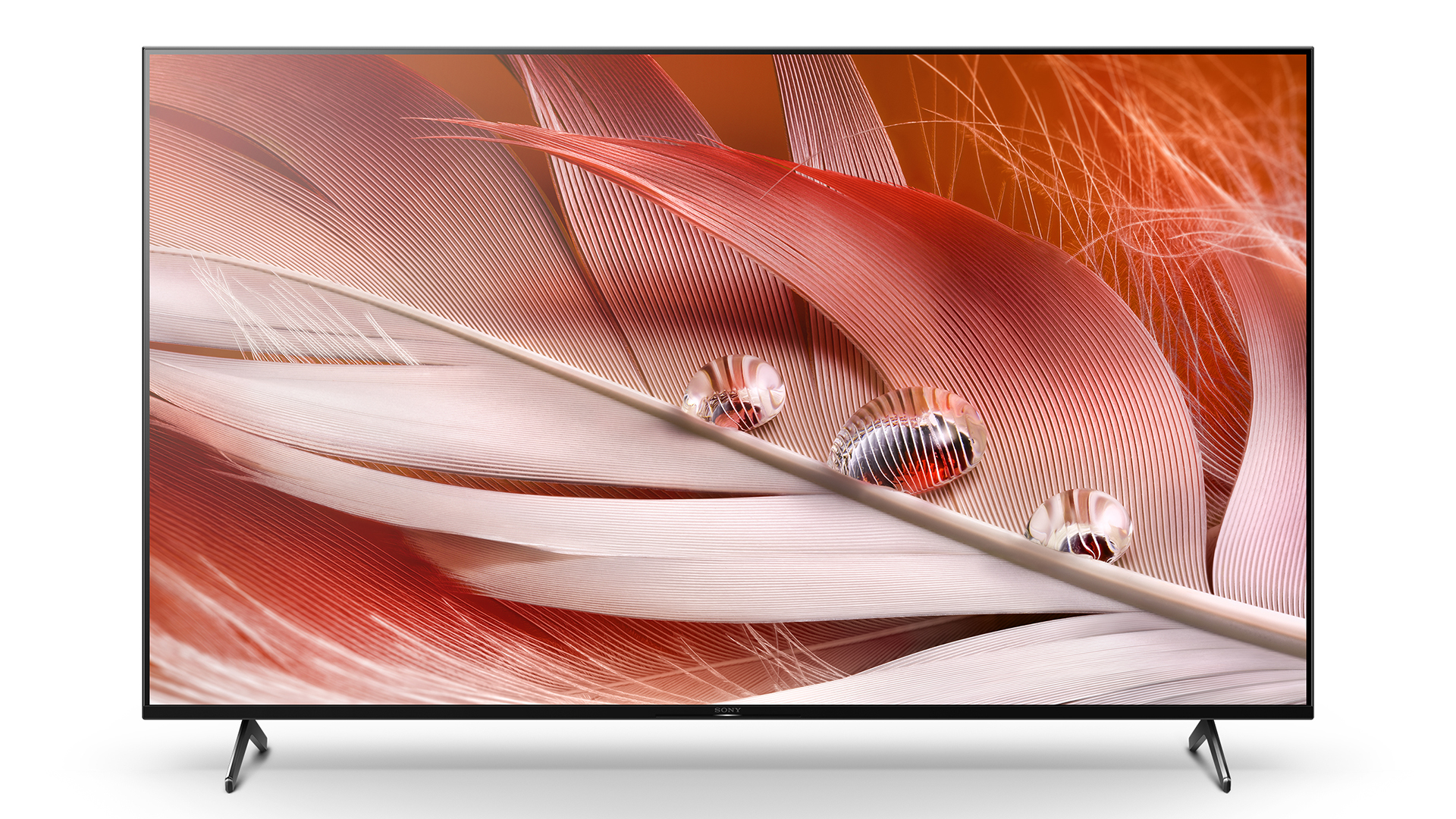
Sony X90J review: Sound quality
In terms of built-in audio, the X90J's X-Balanced Speaker setup employs a pair of 10W full range drivers and two side tweeters. That's a far cry from Sony's higher-end A90J, which turns the entire display into a massive object-based speaker with built-in subwoofers.
Of course, the X90J is a mid-range television, so while you can't expect a truly revelatory sound experience, you can rely on it to perform commendably for the most part.
We found the X90J's speakers to be fairly quiet, forcing us to really crank the volume higher than you'd expect to get it at an acceptable level.
In these instances, you do run the risk of the TV's volume being too high when something especially loud happens on screen, but thankfully, the X90J offers a choice of three sound modes which you can select from the TV's pop-up settings menu. These include Standard, Dialogue (super handy for late-night viewing when you don't want to push the volume so high) and Cinema.
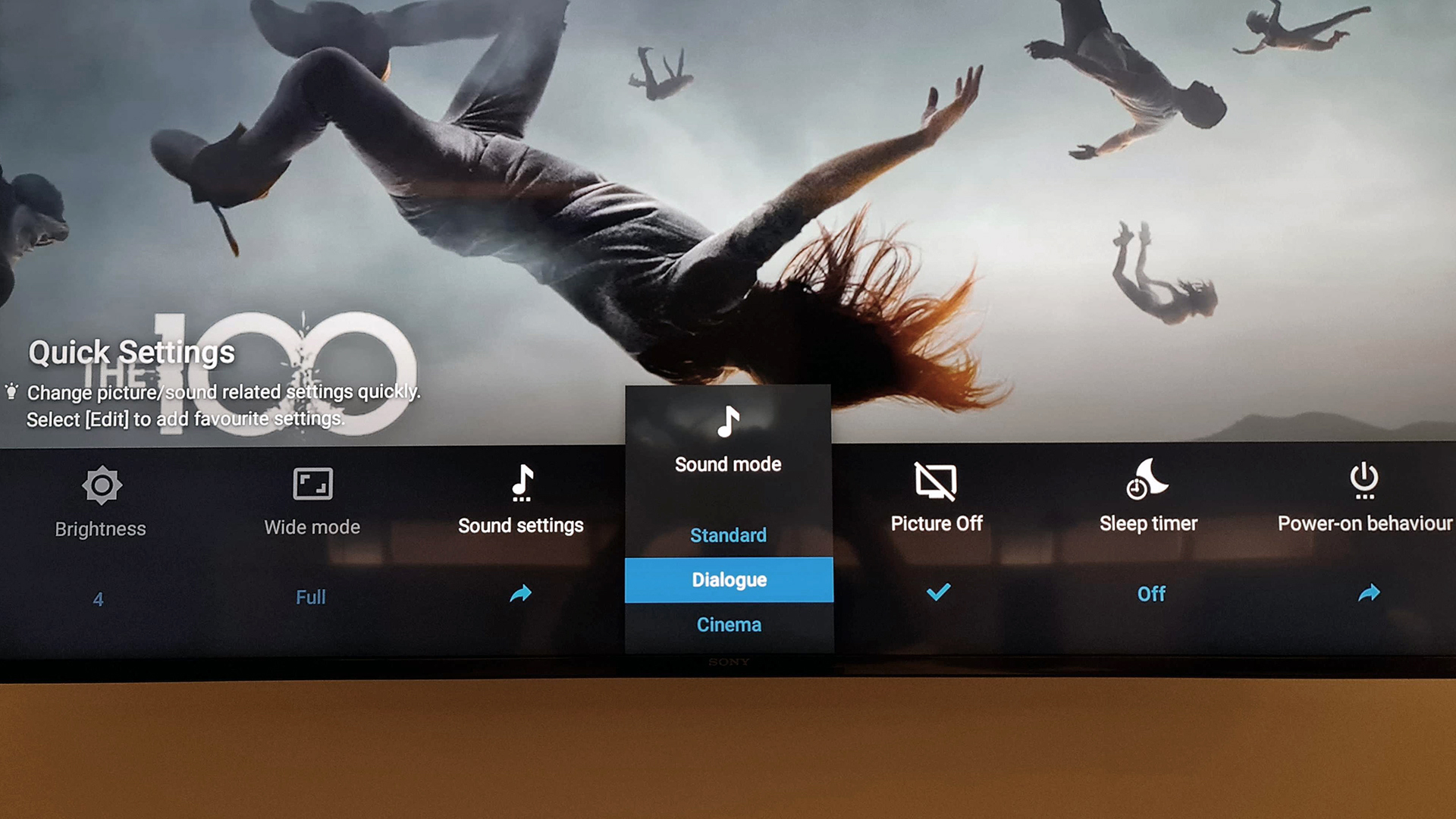
Sony's X90J is also said to offer simulated 3D audio, and while there was at least some level of dimensionality produced from the TV's built-in speakers, it wasn't a patch on a real Dolby Atmos setup.
The lack of up-firing speakers means you won't hear anything flying overhead, and we never really felt like we were surrounded by sound, either. If that's the kind of audio experience you're after, you'll need to step up to one of the best soundbars, or a full receiver-and-surround system.
Thankfully, the TV does provide Dolby Atmos passthrough (HDMI 3 eARC port only), allowing you to get a proper 3D audio experience when connected to supported audio equipment.

Sony X90J review: Design & usability
Sony's industrial design is generally very good, and the X90J keeps that going. From front on, the X90J's design looks as pretty as any other television in Sony's 2021 lineup, with relatively small black bezels and a small and tasteful Sony logo under the screen.
Admittedly, the rear of the TV feels a bit cheaper, with a plastic backing that reveals the X90J's mid-range positioning. It's also not the thinnest TV around – the 65-inch model starts thin at the top then curves outwards as it heads down, measuring around 71mm at its thickest point. That means it will noticeably stick out a bit if wall-mounted.
That said, we're big fans of the X90J's thin, triangular feet. They're classy and understated, giving the TV a propped up look when placed on a unit or desk. They also provide a good deal of stability, avoiding the wobble that was evident in some of Sony's 2020 models.

As for the X90J's remote control, you won't find anything here that hasn't already been included in the ones that came with the last few Sony TVs. You get some quick access buttons for YouTube, Netflix, Prime Video and YouTube Music, and the usual circular direction button in the middle of the remote for navigation.
In a clear upgrade from the Android TV interface featured in last year's Sony televisions, the Sony X90J runs on the all-new Google TV platform, offering users a refreshed home screen that's populated with content from a variety of streaming and catch-up services.
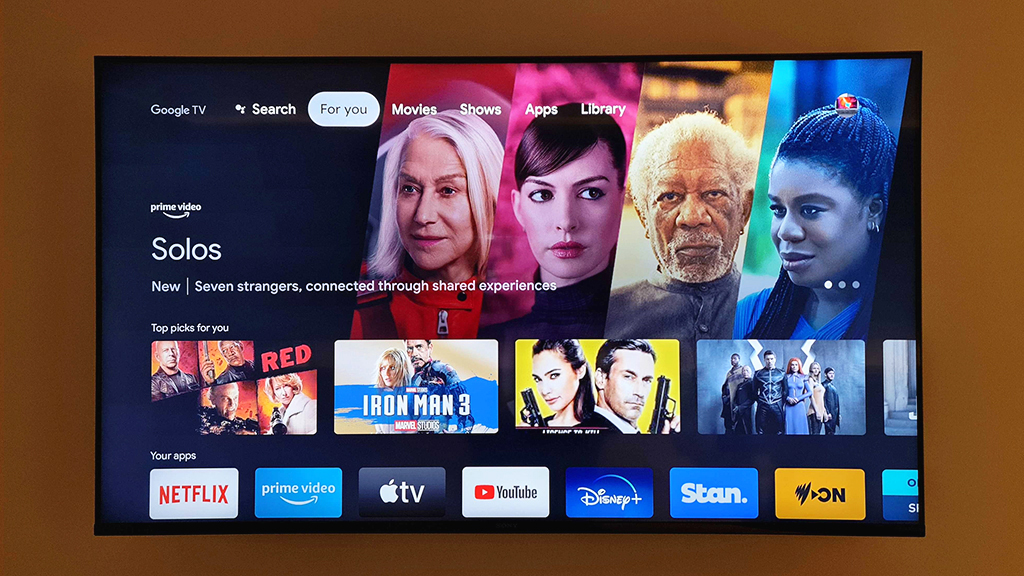
Those who've used the recent Chromecast with Google TV will be immediately familiar with the X90J's home screen, which presents the user with big, beautiful imagery and a content selection that's driven by your viewing habits.
The platform's Google-powered smarts are able to suggest content that it thinks you might like, seamlessly mixing in shows and movies from a variety of readily-available sources.
And, it being a Google platform, you have easy access to Google Assistant search functionality, allowing you to simply ask for movies in a particular genre, or shows starring a specific actor.
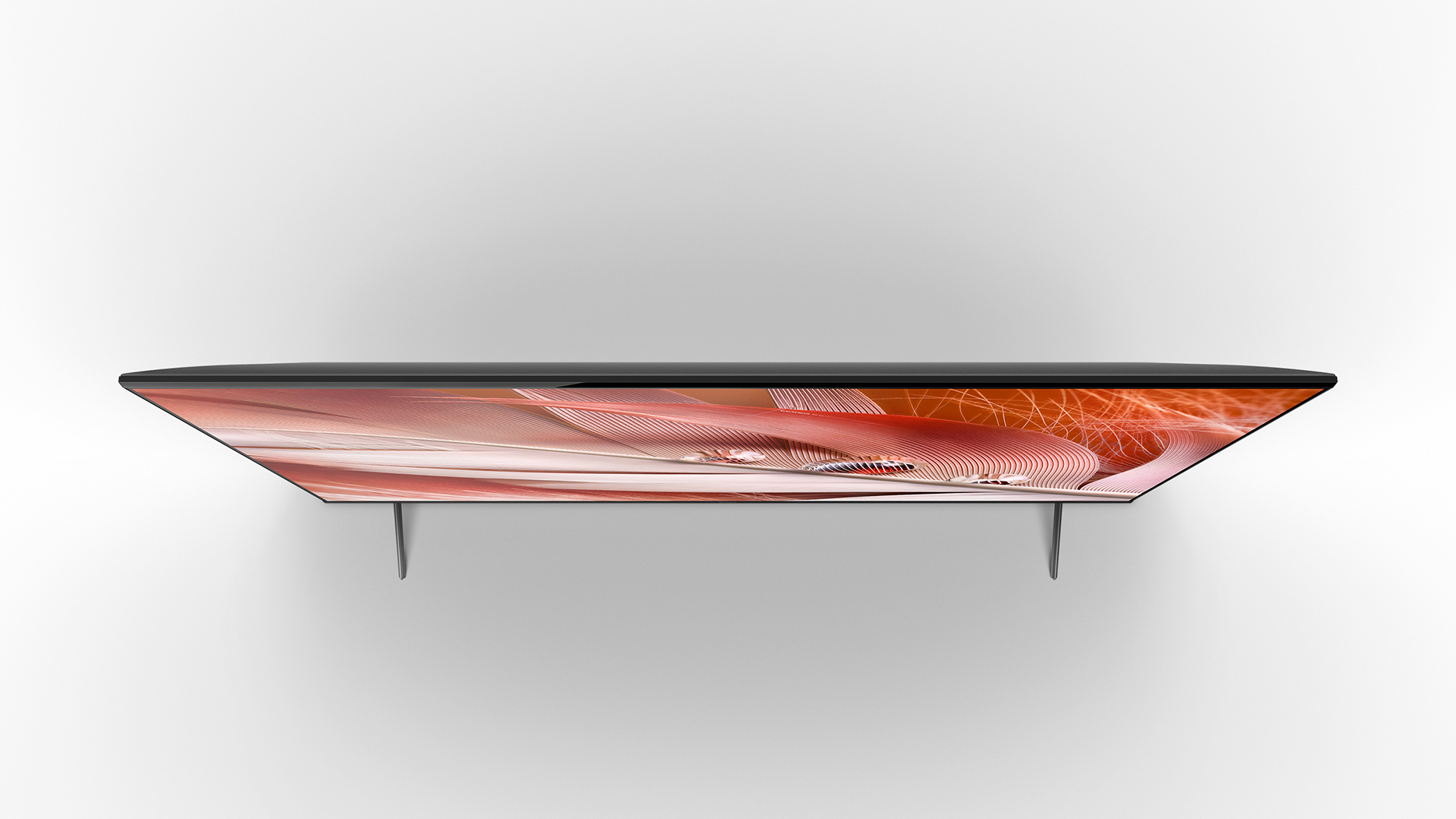
Sony X90J review: Verdict
Sony's X90J provides a noticeable step up from last year's models in that it offers HDMI 2.1 support, an improved processor and a refreshed smart TV interface in the Google TV Platform.
Its color reproduction is just wonderful, with some clever processing techniques which allow images to look as good as can possibly be on an LED TV. It also offers excellent upscaling and motion processing to back it all up.
That said, there are a few areas in which it could stand to improve. The X90J has one of the glariest screens we've seen in a while, and, while its speakers do a decent job, they could stand to be a bit punchier – though if you add a soundbar, this issue goes away, of course.
Overall, the Sony X90J is a great mid-range TV for its price, offering terrific picture quality, decent black levels, smooth motion and nice usability.
Sony X90J review: Also consider
One of the biggest competitors for the Sony X90J at launch is its own predecessor, the Sony XH90/X900H. It's still available to buy at the time of writing, and is much cheaper, since its price has come down over time. The processing isn't as advanced, and it starts from 55 inches rather than 50, but remains the best in current price range, and you still get the same HDMI 2.1 connectivity for gaming. It's even receiving an upgrade to Google TV for its smart platform too. It's a really strong choice, but there's no question you get a slightly better picture and more future-proofing from buy the newer model. Here's our full Sony XH90/X900H review, with the latest prices for this model.
The other elephant in the room is the LG B1 OLED TV. It also includes HDMI 2.1 support with VRR and 4K 120Hz support. Its smart platform is excellent too. Being OLED, it's not quite as bright as the Sony, but its contrast and HDR performance is second to none at this price level.
In terms of a direct LED TV competitor from 2021, the Samsung Q80A is the key fight. We haven't had a chance to review it yet, but like the Sony, it offers a full array backlight and HDMI 2.1 support. It supports HDR10+ and doesn't support Dolby Vision, so you get something of a swap there. We have a guide to how this model differs from its Mini-LED-powered sibling, the Q85A – here's our Samsung Q80A vs Samsung Q85A breakdown.